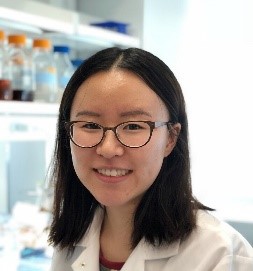Advanced Electrochemical Biosensors for Food and Water Safety
A special issue of Processes (ISSN 2227-9717). This special issue belongs to the section "Environmental and Green Processes".
Deadline for manuscript submissions: 10 June 2024 | Viewed by 100
Special Issue Editors
Interests: food safety; food microbiology; microbial metabolomics; biosensor
Special Issues, Collections and Topics in MDPI journals
Interests: electronic structure; electrocatalysis; semiconductor; computational chemistry
Special Issues, Collections and Topics in MDPI journals
Special Issue Information
Dear Colleagues,
Food and water safety is vital. The foodborne and waterborne illnesses resulting from biological and chemical contaminants pose an increasing threat to human health worldwide. The ability to more rapidly and sensitively detect contaminants in food and water samples is critical to ensuring a safe water and food system. Electrochemical biosensors offer a promising alternative to conventional analytical methods, providing a convenient detection method that can instantly obtain quantitative signals with minimal equipment. Electrochemical detection mornally measures the potential, current or charge accumulation. Electrochemical biosensors have been widely studied in the field of contaminant detection for water and food safety, and have broad application in numerous areas.
This Special Issue, entitled “Advanced Electrochemical Biosensors for Food and Water Safety”, mainly focuses on current advancements in electrochemical biosensors for the detection of biological and chemical contaminants in the provision of food and water safety. The scope of this Special Issue includes, but is not limited to, the following topics:
- New technology or concepts in the fabrication of electrochemical biosensors;
- Novel design of electrode structure;
- Advanced materials for electrochemical biosensors;
- Improvements in the sensitivity and specificity of electrochemical biosensors;
- Novel sample preparation methods for electrochemical detection in complex food samples;
- Technical, review or mini review articles based on electrochemical biosensors in the field of water and food safety applications.
Dr. Danhui Wang
Dr. Shiru Lin
Guest Editors
Manuscript Submission Information
Manuscripts should be submitted online at www.mdpi.com by registering and logging in to this website. Once you are registered, click here to go to the submission form. Manuscripts can be submitted until the deadline. All submissions that pass pre-check are peer-reviewed. Accepted papers will be published continuously in the journal (as soon as accepted) and will be listed together on the special issue website. Research articles, review articles as well as short communications are invited. For planned papers, a title and short abstract (about 100 words) can be sent to the Editorial Office for announcement on this website.
Submitted manuscripts should not have been published previously, nor be under consideration for publication elsewhere (except conference proceedings papers). All manuscripts are thoroughly refereed through a single-blind peer-review process. A guide for authors and other relevant information for submission of manuscripts is available on the Instructions for Authors page. Processes is an international peer-reviewed open access monthly journal published by MDPI.
Please visit the Instructions for Authors page before submitting a manuscript. The Article Processing Charge (APC) for publication in this open access journal is 2400 CHF (Swiss Francs). Submitted papers should be well formatted and use good English. Authors may use MDPI's English editing service prior to publication or during author revisions.
Keywords
- food safety
- water safety
- electrochemical detection
- electrochemical biosensor
- bacteria detection
- biological contaminant
- chemical contaminant






